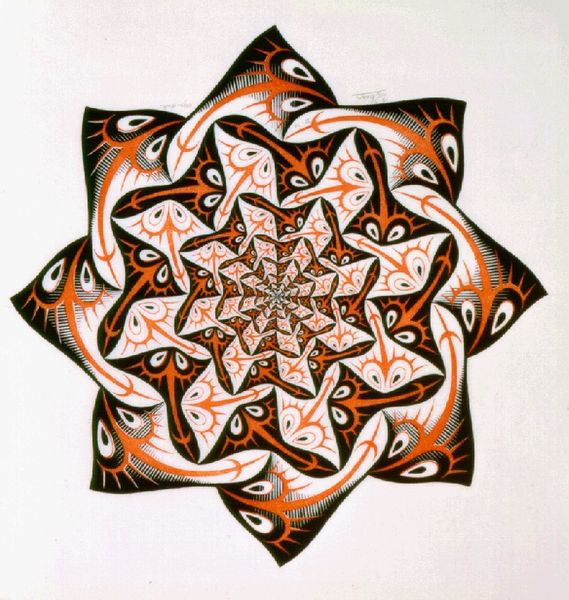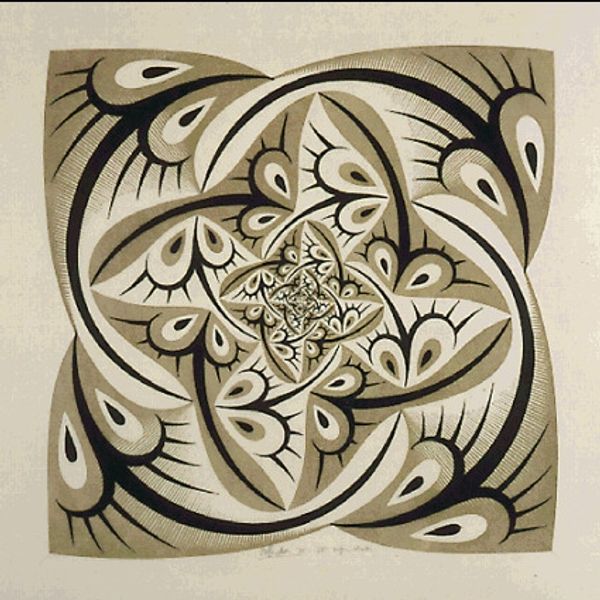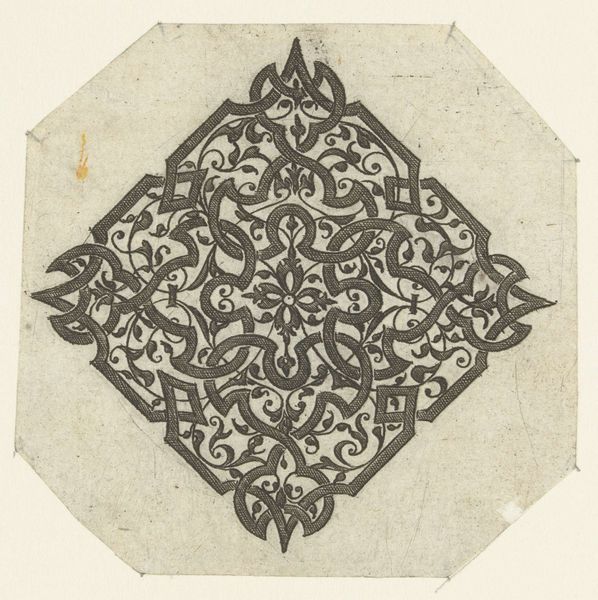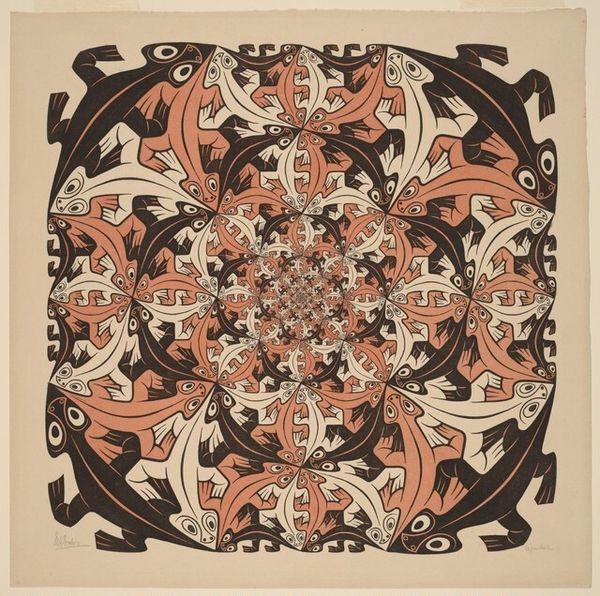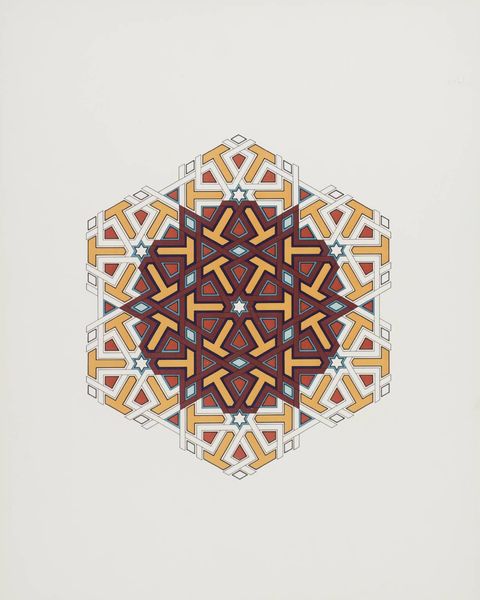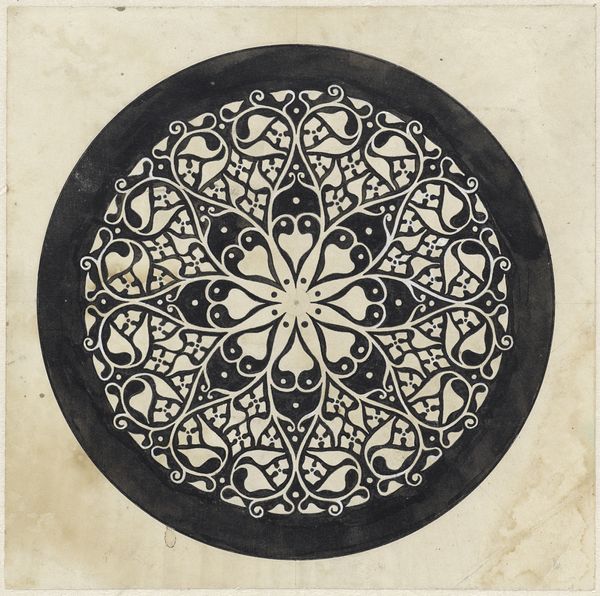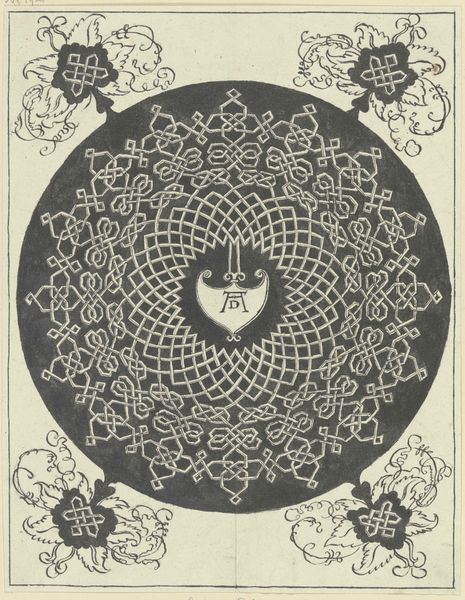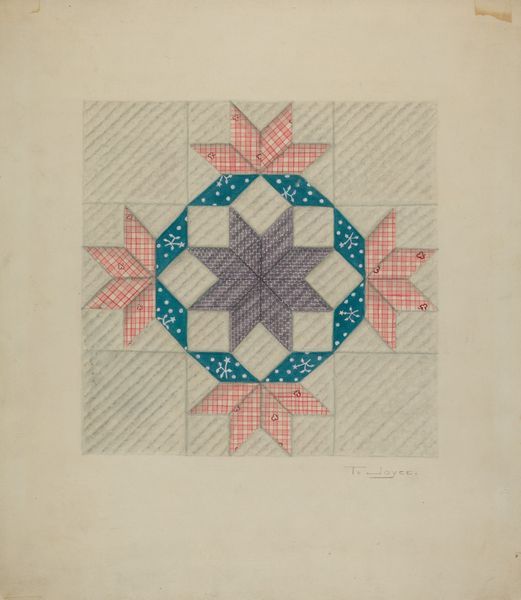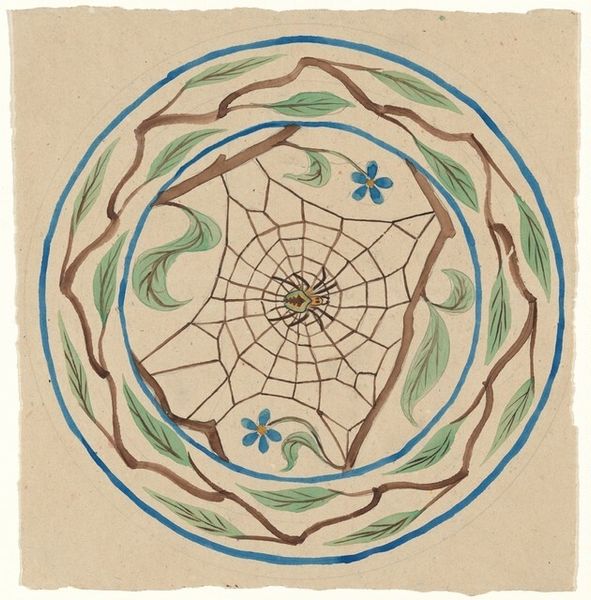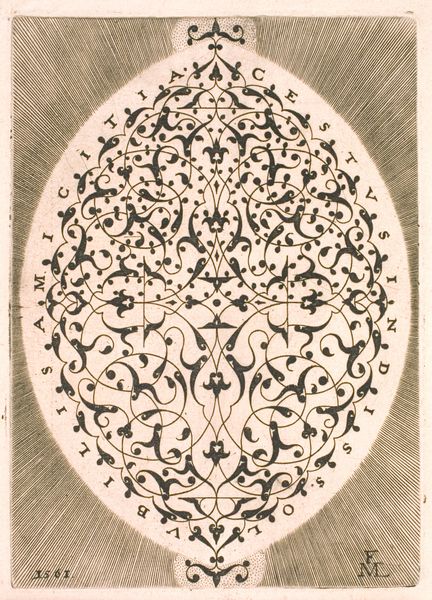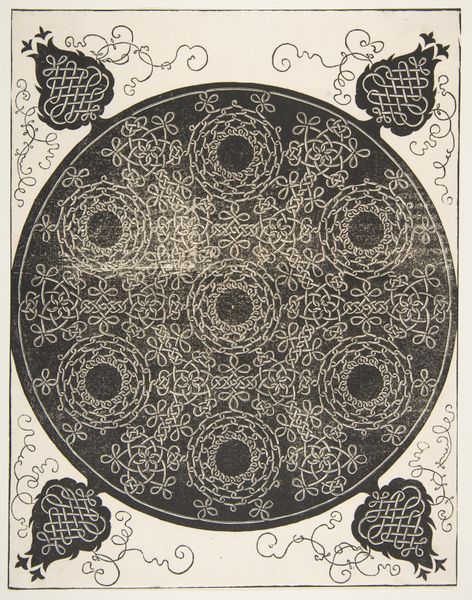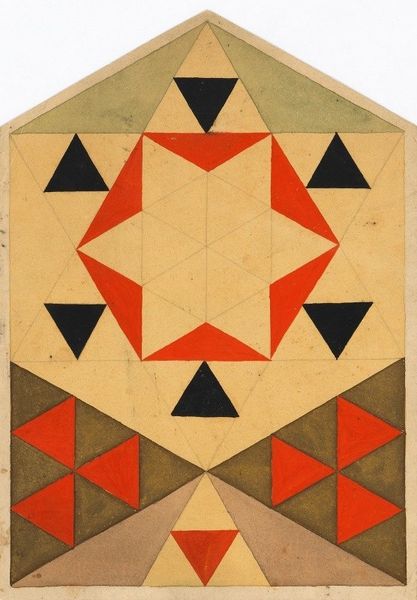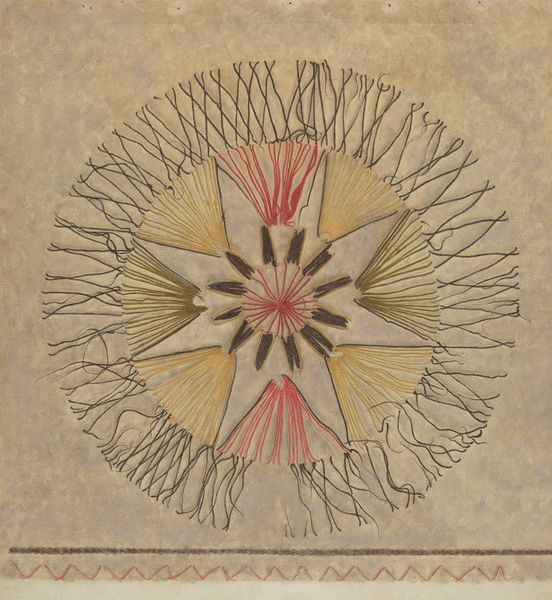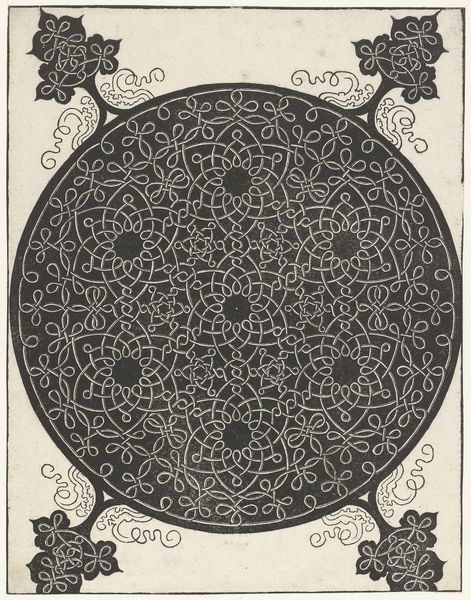
graphic-art, print
#
graphic-art
# print
#
abstract pattern
#
ethnic pattern
#
geometric
#
abstraction
#
intricate pattern
#
pattern repetition
#
layered pattern
Dimensions: sheet: 47.94 × 44.93 cm (18 7/8 × 17 11/16 in.) image: 42.7 × 42.7 cm (16 13/16 × 16 13/16 in.)
Copyright: National Gallery of Art: CC0 1.0
Editor: We are looking at M.C. Escher's "Path of Life I," created in 1958. It’s a graphic print with a captivating spiraling pattern. What initially strikes me is the sheer intricacy; it feels almost meditative, a continuous loop of life. What do you make of it? Curator: Intricate indeed! Consider Escher’s method: meticulously carved woodblocks, the labor-intensive process central to understanding this image. Each repetition speaks not just to aesthetic pattern but also to the mechanics of reproduction, of industry. What is being repeated, and why? Is this a reflection on mass culture and consumption finding its roots after World War II? Editor: That’s a fascinating point. I hadn’t thought about it in terms of mass culture, only individual meditation. So, you're seeing a link between Escher’s repetitive forms and the rise of consumerism in the 1950s? Curator: Absolutely. The act of creating the print is itself a form of industrial, albeit artisanal, production. Escher provides an analogy to this cultural moment. We can think about printmaking and its potential accessibility which opened artwork to different kinds of audiences during this time, something art didn't used to provide. This democratizing shift in accessing artworks also shifted the dynamics between artwork and audience and should not be discounted as part of its cultural significance. What sort of statement might Escher be trying to make about art as commodity here? Editor: I see how examining the process adds depth. Thinking about art as a commodity does give a new edge to what seems, on the surface, to be pure abstract pattern. Curator: Precisely. By focusing on Escher's use of printmaking, his careful method becomes not just a technique, but a comment on production and dissemination. It compels us to contemplate how artwork becomes part of larger systems of value. Editor: This reframes how I view his prints entirely, understanding it not as just abstraction, but a material artifact within a much broader cultural and economical context. Thank you for opening my eyes to it!
Comments
No comments
Be the first to comment and join the conversation on the ultimate creative platform.
